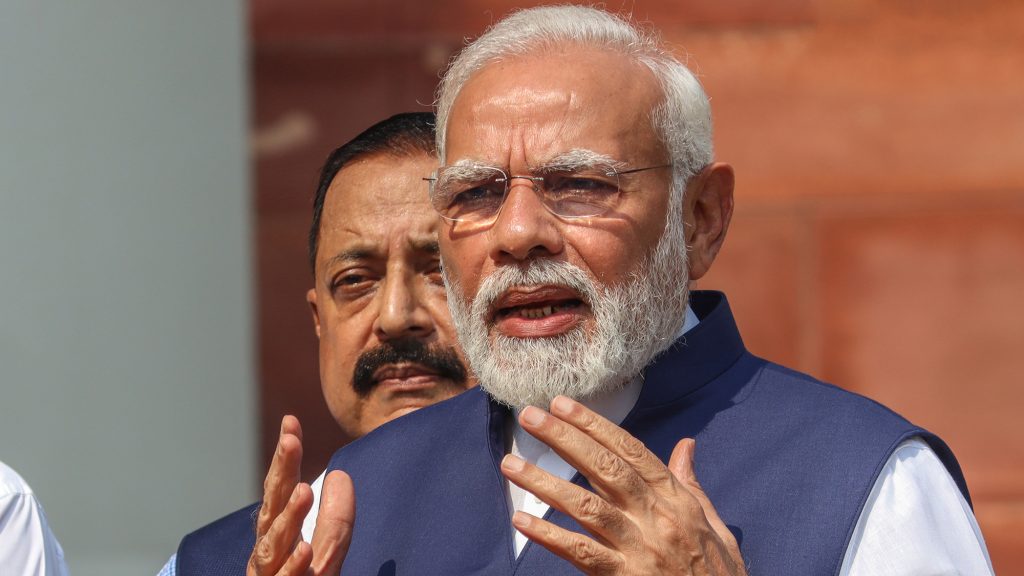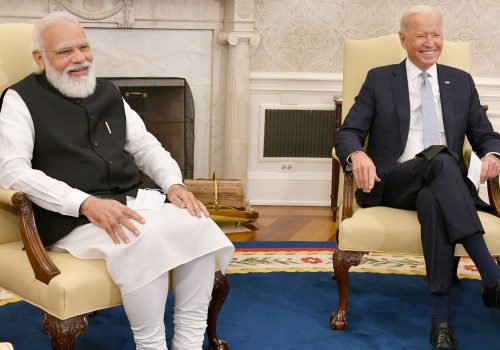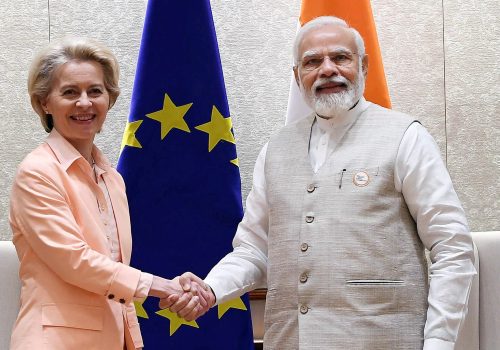Recent trade negotiations around the world have shifted attention from tariffs to regulatory measures, with some agreements committing countries to employ good regulatory practices (GRP)—which require transparency, predictability, and accountability—in the process of developing new policies. India and the United States have started discussions on GRP, but they still share tension over India’s digital trade policies. With a new digital regulatory framework, India now has an opportunity to prove it can effectively implement GRP, and in doing so, generate momentum in the trade relationship, eventually laying a path towards a US-India free trade agreement.
India takes a pause on new regulatory action on digital trade
The Indian government took an important step forward this August by delaying a potentially transformational, but certainly controversial, bill focused on its burgeoning digital economy.
India’s draft Data Protection Bill (DPB) garnered unusual domestic and international attention. It promised a comprehensive regulatory regime for data and broader digital trade, covering privacy, cybersecurity, law enforcement, and industrial policy. However, it attracted significant criticism: Some viewed it as too heavy-handed in regulating social media platforms or as inadequate as it exempted government entities from protecting personal data; others, such as US tech titans, expressed concerns about it being highly protectionist, essentially curbing international data storage and data flows.
Granted, policymakers in any country can struggle to craft a mix of regulatory approaches for protecting personal data that makes sense in their societies. Too often, arguments from every side of the debate use a take-no-prisoners approach, making it difficult for the average person to understand what a balanced policy should be. Both extremes—laissez faire nonregulation versus a state-imposed “great firewall”—offer cold comfort. Approaches that are in between, such as the European Union’s General Data Protection Regulation and its offspring, may not endure as default examples of reasonable, responsible digital regulation, especially if there are long-term impacts that stifle innovation in digital technologies.
In this light, India’s decision to take a deep breath and continue deliberations and consultations by withdrawing the DPB draft is welcome: It had evolved into a mishmash of well-meaning privacy protections, questionable state interventions to favor domestic champions, and borderline-objectionable steps to extend state ownership of citizens’ data. It certainly could not be viewed as a model law for addressing legitimate public objectives in the digital space.
An opportunity for good regulatory practice
As such, the government’s going back to the drawing board in the face of criticisms may exemplify GRP in action. Ideally, interested stakeholders will have the opportunity to make their cases to the government and other stakeholders, and the Indian government will be better informed in weighing the costs and benefits of alternative approaches. Indian policymakers now have the opportunity to test-run the basics of GRP in developing a digital regulation and can use it as an example to inspire a model for good governance in other sectors.
Across the globe in the United States, the 1946 Administrative Procedures Act generally requires transparency, predictability, and accountability when policymakers write regulations—this legislation has since been fleshed out in much greater detail through executive orders under the authority of the president. The United States has encouraged trade partners to uphold the same transparency, predictability, and accountability through its trade agreements: Those agreements, in negotiating on tariffs, often include conditions that require governments to open their regulatory processes to greater scrutiny and accountability. And although the World Trade Organization has long had in place rules regarding technical barriers to trade, the Obama administration’s negotiation of the Trans-Pacific Partnership (TPP) inaugurated a new era for including provisions in trade agreements on how a country develops and implements its regulations. The United States ultimately left the TPP, but it later built on those provisions in the United States-Mexico-Canada Agreement and US-Japan Trade Agreement.
India and the United States can use their bilateral trade relationship to share perspectives on GRP in the upcoming Trade Policy Forum. There have been positive exchanges already, in which the two sides shared information on their domestic practices. GRP might be an opportune area for agreement, at least in the interim, that could encourage enthusiasm for an eventual US-India free trade agreement. The Biden administration has also included negotiations on GRP under the trade pillar of the Indo-Pacific Economic Framework (IPEF), although India declined in September to join the trade pillar, opting instead to focus on the other three pillars: supply chains, decarbonization, and taxation/anticorruption. US-India bilateral engagement on GRP could complement parallel IPEF negotiations on GRP.
India’s continuing saga of start-stop efforts to regulate the digital domain may soon be better informed by a real-life implementation of GRP. For that to be the case, it should include public notice of opportunities to comment, sufficient time for stakeholders to review any new drafts of legislation and provide responsive comments, and interministerial consultation on areas of shared responsibility. This deliberative process, which should also include a detailed explanation of the rationale for the chosen regulatory approaches, can inform new regulations that have weighed the costs and benefits of alternatives.
At this point, it may not seem likely that a new version of the DPB, whenever it might emerge, will be vastly less troublesome than the last. The stakes are high in terms of generating trust in India’s digital ecosystem, creating welcoming incentives for much-needed foreign investment, and promoting homegrown innovation that can compete fairly in global markets. It’s best to give the Modi administration the benefit of the doubt and hope that this delay will be well-utilized to follow the principles of GRP, leading to a framework that can be an example for the rest of the world.
Mark Linscott is a nonresident senior fellow at the Atlantic Council’s South Asia Center and the former assistant US trade representative for South and Central Asian affairs, and WTO and multilateral affairs.
Further reading
Mon, Jun 20, 2022
The case for a US-India digital handshake
Report By
This report advocates for a US-India “digital handshake” to overcome substantive and institutional barriers in US-India digital economic cooperation.
Fri, Jun 17, 2022
Where do the “fence-sitters” sit on trade with Russia?
Econographics By
At least in terms of trade, seemingly neutral countries aren’t enabling Russia as much as their public positions might suggest.
Wed, Apr 27, 2022
As the EU courts India on trade, here’s what to watch
New Atlanticist By Mark Linscott
Brussels wants to bring New Delhi closer into its economic orbit—but that won't be so easy.
Image: India's prime minister Narendra Modi, addresses the media on the opening day of the Monsoon session 2022 at Parliament House. Photo by Ganesh Chandra/SOPA Images via Reuters.



